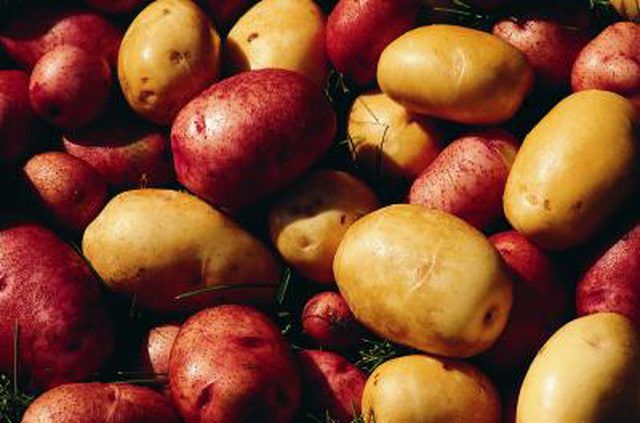Bulbs
Flower Basics
Flower Beds & Specialty Gardens
Flower Garden
Garden Furniture
Garden Gnomes
Garden Seeds
Garden Sheds
Garden Statues
Garden Tools & Supplies
Gardening Basics
Green & Organic
Groundcovers & Vines
Growing Annuals
Growing Basil
Growing Beans
Growing Berries
Growing Blueberries
Growing Cactus
Growing Corn
Growing Cotton
Growing Edibles
Growing Flowers
Growing Garlic
Growing Grapes
Growing Grass
Growing Herbs
Growing Jasmine
Growing Mint
Growing Mushrooms
Orchids
Growing Peanuts
Growing Perennials
Growing Plants
Growing Rosemary
Growing Roses
Growing Strawberries
Growing Sunflowers
Growing Thyme
Growing Tomatoes
Growing Tulips
Growing Vegetables
Herb Basics
Herb Garden
Indoor Growing
Landscaping Basics
Landscaping Patios
Landscaping Plants
Landscaping Shrubs
Landscaping Trees
Landscaping Walks & Pathways
Lawn Basics
Lawn Maintenance
Lawn Mowers
Lawn Ornaments
Lawn Planting
Lawn Tools
Outdoor Growing
Overall Landscape Planning
Pests, Weeds & Problems
Plant Basics
Rock Garden
Rose Garden
Shrubs
Soil
Specialty Gardens
Trees
Vegetable Garden
Yard Maintenance
How to Grow Potatoes in Aquaponics
How to Grow Potatoes in Aquaponics. Aquaponics is a method of growing fruits and vegetables in a hydroponic system combined with the aqua-culture of fish. While most aquaponics systems use the water culture system, potatoes thrive when grown in a wick-style hydroponic system. By building a closed system of recirculating water and nutrients, the...

Aquaponics is a method of growing fruits and vegetables in a hydroponic system combined with the aqua-culture of fish. While most aquaponics systems use the water culture system, potatoes thrive when grown in a wick-style hydroponic system. By building a closed system of recirculating water and nutrients, the aquaponic system serves a dual purpose -- cleaning the pond water and nourishing the potatoes.
Things You'll Need
Plastic fish pond
Drill with 1-inch spade bit
5-gallon bucket with lid
Pea gravel
3 plastic garbage cans
Pond pump
Plastic tubing, 1-inch diameter
Perlite
Coconut coir
Vermiculite
Cement blocks
Set up a plastic fish pond according to the manufacturer's directions. Add water to the fill line and allow it to sit 24 to 48 hours so the chlorine in the water completely evaporates.
Drill a 1-inch-diameter hole for plastic tubing in the side of a 5-gallon bucket, 4 inches from the top. Also drill a hole through the lid of the bucket at the same diameter as the pump tubing.
Place the bucket on an upside-down garbage can next to the fish pond. Attach a 3-foot length of 1-inch plastic tubing to the hole in the side, using silicone sealant to seal around the hole. Allow the silicone to dry completely. Fill the bucket with clean gravel.
Place the lid on the bucket and push the pump tubing through the hole. Seal with silicone sealant and allow to dry. This bucket becomes the bioreactor, removing the ammonia from the fish waste through bacterial action.
Nest two plastic garbage cans together. Measure the distance between the tops of the two cans and add 1 inch to the measurement. Separate the garbage cans.
Mark the measurement on the side of one garbage can. Drill a 1-inch hole through the side of the can. This can becomes the reservoir for the hydroponic system.
Turn the second garbage can upside down. Drill 10 to 15 1/2-inch diameter holes in the bottom of the can. Line the bottom with fiberglass window screening. This becomes the planter.
Place the reservoir on cement blocks next to the fish tank and bioreactor, with the hole in the side facing the fish pond. Attach a 3-foot length of tubing to the side of the can, sealing it with silicone sealant. Allow it to dry completely. Place the other end of the tubing in the fish pond.
Set the planter inside the reservoir. Place the end of the bioreactor hose in the top of the planter. Raise the base of the bioreactor with cement blocks if necessary so the water will drain freely into the planter.
Plug in a pond pump and start pumping water into the bioreactor. Allow it to fill the bioreactor and drain into the planter until water comes out of the tubing in the reservoir, returning to the fish pond.
Add fish to the pond. Generally, shrimp, crayfish or tilapia are grown in food-producing aquaculture systems. Allow the system to run for one to two weeks before planting the potatoes.
Rinse perlite thoroughly and mix equal parts perlite, coconut coir and vermiculite. Fill the planter one-quarter full with the planting mix. Place six seed potatoes in the planter and cover with 2 inches of planting mix.
Add more planting mix as the potato vines grow, covering all but the last two sets of leaves. When the vines reach the top of the planter, allow them to grow freely. Harvest the potatoes when the vines die back in the fall.
Tips & Warnings
Place the aquaculture system in full sun or under grow lights. Potatoes require six to eight hours of direct sun daily.
Feed the fish a high-quality fish food.
Monitor the ammonia level in the tank. Kits are available at home garden centers and shops specializing in pond culture.
Many fruits and vegetables are grown in a water culture system instead of a wicking system.
Plug the pond pump into a GFCI-protected outlet.
Cover the fish pond with a steel mesh or other protective covering if you have children. Children can drown in 1 inch of water.
Support all parts of the system with cement blocks or other sturdy supports; water is heavy.